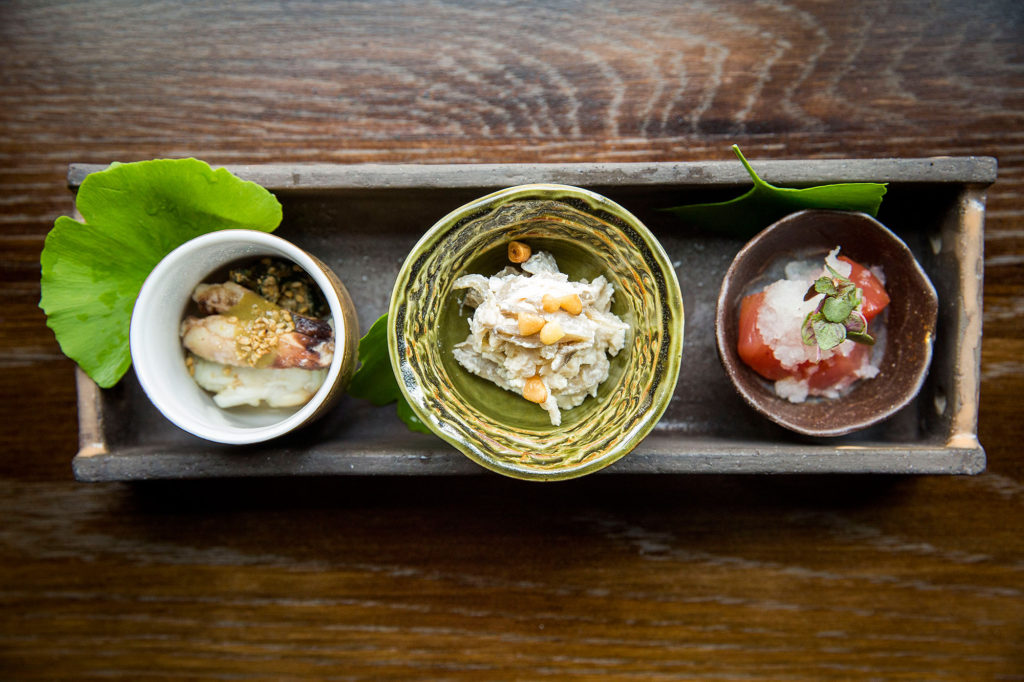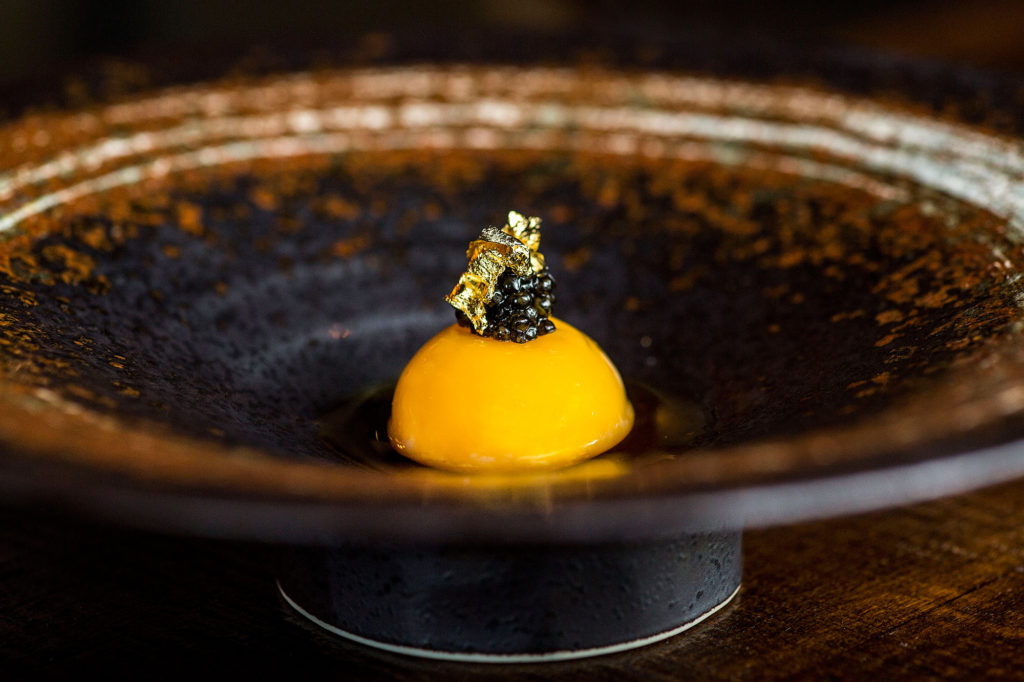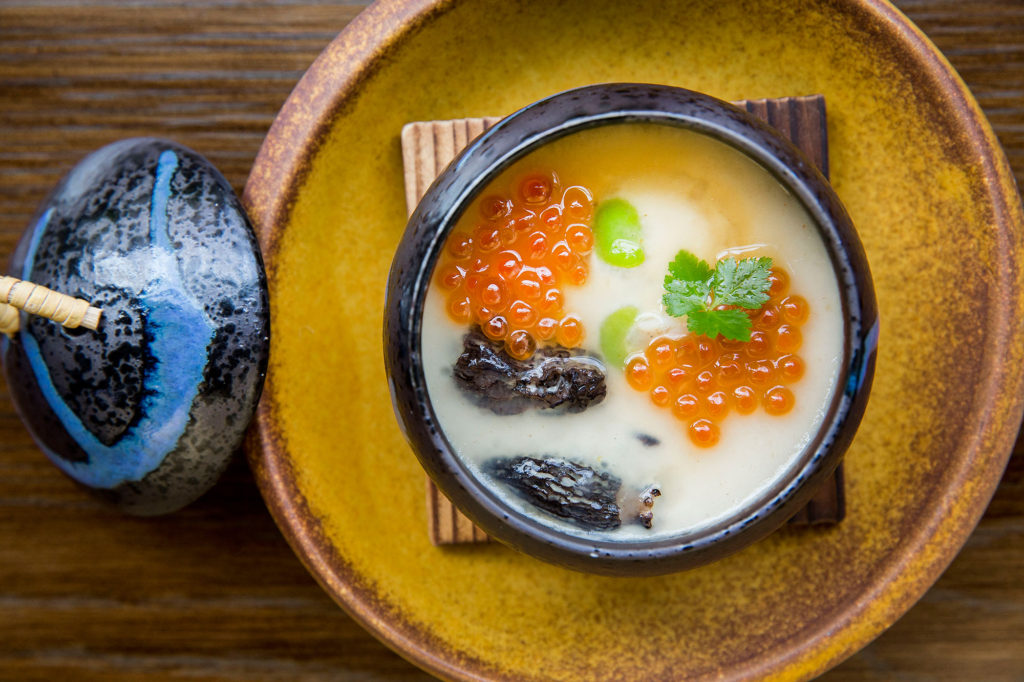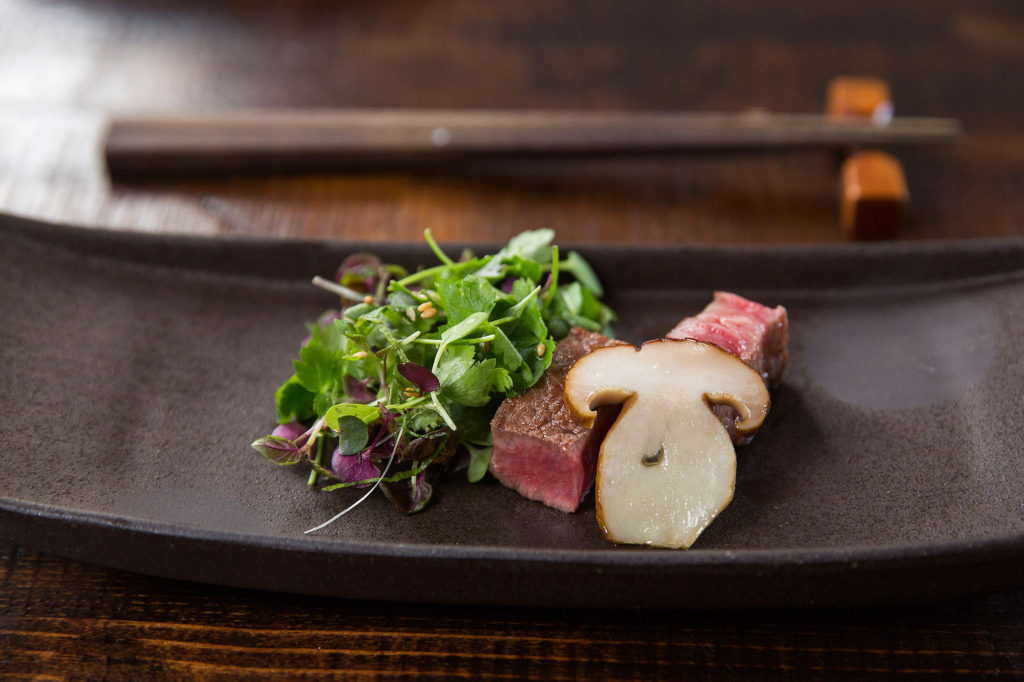
There are basically two kinds of Kaiseki which are 懐石(Kaiseki) or会席(Kaiseki). Both read the same way but are two different cuisines that originated from the same place but evolved into two different cuisines over the centuries. In the third of three posts, we talk with Chef Shota Nakajima for his interpretation of Kaiseki.
A Quick History of Kaiseki
No one is sure when it actually started but the earliest mention of it is in 1522 by Sen no Rikyuū who called it懐石, 懐 means “by your chest” and 石 means “rock,” or “a type of food to satisfy the stomach and to warm the body.” This definition refers to monks were only allowed to enjoy one meal before noon, so at night when the body temperature dropped they would hold a warm rock close to their body to simulate a sense of warmth and fullness. Sen no Rikyuū, also known simply as Rikyuū, is known for creating茶道 cha-dou,” which is the way to understand tea. He said that tea tastes best when your stomach is satisfied by a meal consisting of rice, miso soup and braised vegetables or raw fish with soy sauce (now known as sashimi) that evolved into the first form of Kaiseki.
Naka’s Kaiseki
The evolved version of Kaiseki that we do at Naka is会席, a new art form, which is a balance of color, texture and seasonality. The first character of this means “meet” and the second character means “seat” which translates to “formal occasion.”
Is This Authentic or Real Kaiseki?
This is probably the hardest question to answer. What does “authentic” even mean? There are base rules of Kaiseki that we follow for the food, such as the order in which course needs to come, the cooking procedure and the kitchen culture. Other than that, I create our Kaiseki at Naka to reflect my life experience interpreted through food. I grew up in Redmond, Wash. in the middle of the woods where I grew up loving nature and was inspired by something as simple as burnt cedar or fresh rosemary.
Our Courses
Tasting Menu
The only one on the menu that doesn’t say it’s specifically Kaiseki because it is not a Kaiseki in my mind. It is a menu that was created because 10 courses is something that Seattle is not used to. However, the food on it is not half-assed at all. Its still good food, and is a menu that is great for people who are in a rush or for younger couples.
Naka Kaiseki
Our 10-course menu is what I think most people should order the first time they come into the dining room. Why does it say “naka” on the menu? Because it is the best option that represents what we do.
Sample Menu (may differ from photos)

Course 1
Sake Course
Before the meal everyone receives a cup of sake but instead we do a dish with ume (plum) and a piece of burnt spun sugar. I recommend eating it by crushing the spun sugar into the ume. The bitterness sweetness and crunch of the sugar and the ume works harmoniously together

Course 2
Saki Tsuke or Hassun
After sake is usually a course that features seasonal ingredients and includes the following components:
Shira-ae
“Shira” means white. Which for Japanese cuisine stands for a savory tofu sauce.
Nannban Tsuke
“Nannban” is a term used for people from Spain or Portugal back in the day and refers to leeks and onions—foods that they introduced to the Japanese palate. We fry the madai (snapper) from Japan with potato starch then drop them in a savory sweet pickling liquid called tosa or vinegar with minced red onions.
Tuna and Daikon Aemono
Soy marinated tuna with daikon tossed in create such a nice, refreshing flavor. For this dish we use only the “aka” of the tuna, which is the red part of the tuna. The amount of fat accounts for the color difference and gives it a lot more of a meaty flavor.
Tako-Amani
Slow braised octopus from Spain. Slow cooked in a savory dashi with a little bit of ginger for about 2 and a-half hours. Finished off with freshly grated ginger juice.

Course 3
Tuna Aemono
The belly of the tuna (toro), which is lightly soy marinated is combined with green uni from Hokkaido and a quail egg with a thickened savory dashi and topped with spring onion blossoms and a nasturtium feaf. I recommend breaking the yolk and mixing the uni in with the tuna and enjoying the whole thing as a dip for the tuna.

Course 4
Chawan-Mushi
This is my favorite dish in the restaurant. A lot of people mistake the egg as the main component of the dish but it isn’t. The dashi is the star and the egg is merely used to solidify the dashi while cooking and to carry the seared black cod, mushrooms, and other seasonal ingredients, which are steamed for 10 minutes or so. As it solidifies, the flavor of the ingredients mixes with the dashi and creates the most amazing umami flavor.

Course 5
Cedar Smoked Grilled Black Cod (Gin-Dara Yu-An Ya-Ki)
We fillet the black cod and then lightly salt them to get the excess moisture to release. Then we marinate in our miso marinade base for four hours. Then we strain the liquid and let it air dry so that the skin dries. We grill it on skewers on top of charcoal. The oil from the fish drips onto the charcoal imparting a delicious smoky flavor.
For more information on Naka, head here.
